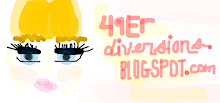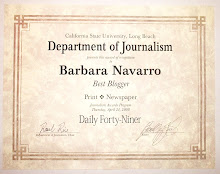
What may be one's vision of a knotty, bony collection of metal sticks and tangled angles might be another person's reminder to not focus on the chaos.
I have not learned the creator of this sculpture, nor do I know the name of it. But I'm on my path to finding it out.
Staring at this piece rouses my imagination—on what it might all mean. To explain it may be somewhat complicated, but just imagine me (or all of us) being somewhere in those scrambled lines.
Maybe these are lines that mimic a sick tongue with irregular interlacing layers of muscles, which in their disordered condition cause great immobility.
Maybe this is an empty cell, with only the traces of lines like we see on connect-the-dot games. Once upon a time things were the way they used to (and should) be—membrane and cytoplasm, to organelles and nucleus, to ribosomes, centrioles, peroxisome, vacuoles, and the whole deal.
Yes, maybe there was somebody who saw the logic in the beautiful way birds' feathers and hair and wings follow a pattern, like connecting a huge population of stars into short, romantic phrases—Hydrus and Mensa, Centaurus and Crux. (Find them in the "Large and Small Magellanic Clouds.")
But with motion, nothing, not even the prettiest constellations, stand still. And that may be because we don't stand still. Isn't that somewhat appealing in all its chaos and asymmetry? Maybe the artist thought about that, too. And viola.
The reminder: not to focus too hard. (After all, there's a shower of water next to that McIntosh Humanities Building, always ready to lure you off the deep fixation.) So, just move on.
That is my insight, my interpretation, on this sculpture. It's safe to wonder. It's safe, because, as they say in class sometimes, there are no right or wrong answers.
There are some facts attached to this piece and those answers will be found in the Diversions section of the Daily Forty-Niner soon, so stay in touch. (I'm working on a feature regarding the University Art Museum's unique permanent collection, and these sculptures belong to that collection.)
Do you ever visit the UAM or sit and stare at those steel/concrete/wooden sculptures all over campus? Maybe, you know, just to wonder?
Photos by Barbara Navarro





1 comment:
better than having nothing
Post a Comment